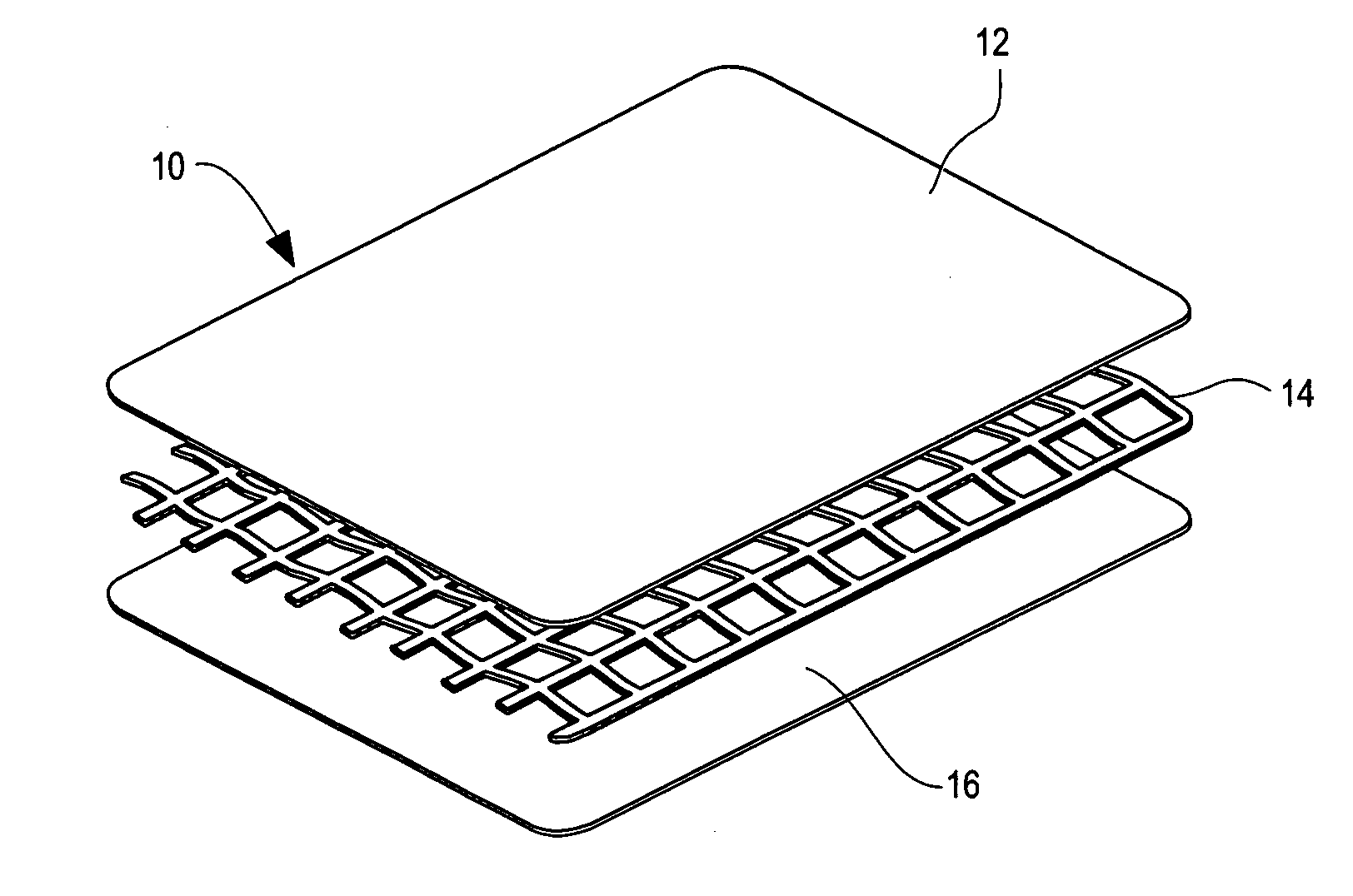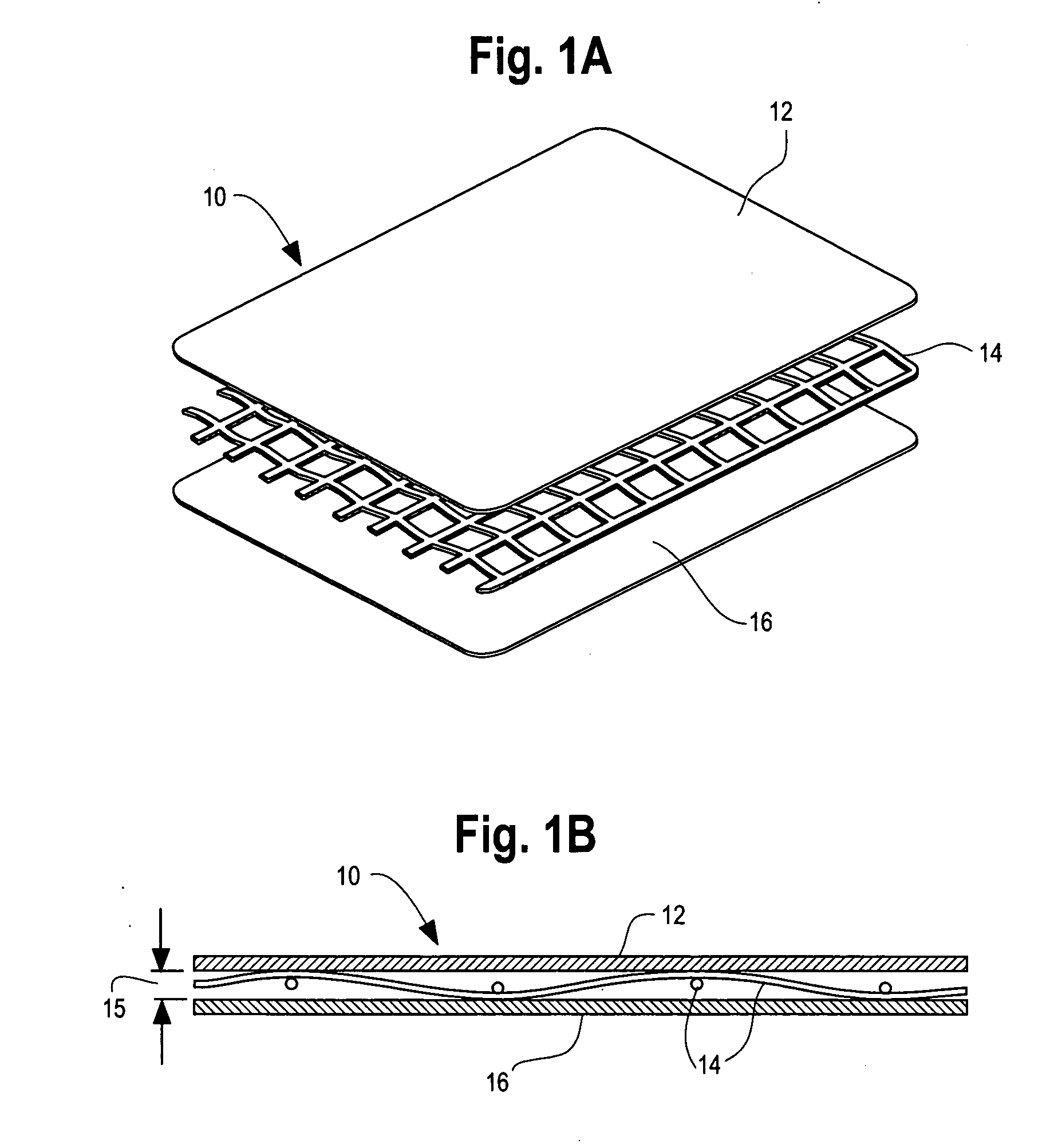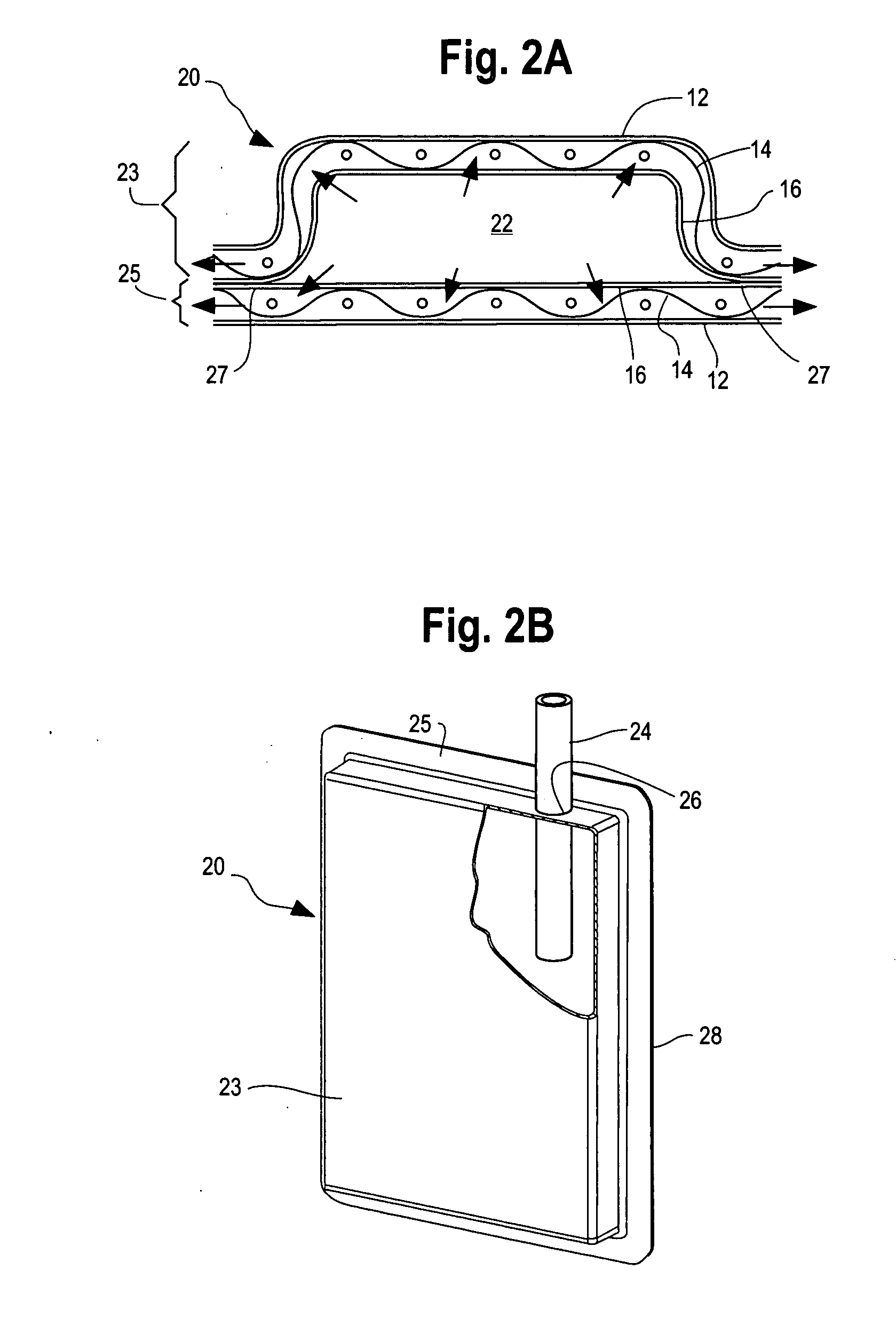Fuel cartridge with a flexible bladder for storing and delivering a vaporizable liquid fuel stream to a fuel cell system
a fuel cell and flexible technology, applied in the direction of fuel cells, pliable tubular containers, containers, etc., can solve the problems of limiting stored energy density, limiting storage cartridges employing mechanical springs again restricting space utilization and stored energy density, so as to achieve the effect of not affecting the electrical performance of the fuel cell
- Summary
- Abstract
- Description
- Claims
- Application Information
AI Technical Summary
Benefits of technology
Problems solved by technology
Method used
Image
Examples
Embodiment Construction
)
[0073] Fuel cartridges are preferred to supply fuel to fuel cell systems, particularly for mobile miniature fuel cell end-uses where the fuel cell is operating with a direct liquid organic fuel such as methanol or formic acid. Fuel cartridges have been invented that solve the problems of storing evaporating fuel, delivering fuel with no moving active components, and managing fuel cell system byproducts efficiently and safely. A fuel cartridge typically has in its most basic form, a bladder, a fuel port coupled to the bladder, and apparatus for extracting the fuel from the cartridge to the fuel cell system. The use of low flashpoint organic fuels in direct fuel cell systems, such as formic acid, create unusual requirements on fuel cartridge design and materials. These include how to manage evaporating gas and vapor from the stored fuel, while providing fuel delivery to the associated fuel cell system with minimum moving parts, while increasing energy density of the storage spacer.
[...
PUM
 Login to View More
Login to View More Abstract
Description
Claims
Application Information
 Login to View More
Login to View More - R&D
- Intellectual Property
- Life Sciences
- Materials
- Tech Scout
- Unparalleled Data Quality
- Higher Quality Content
- 60% Fewer Hallucinations
Browse by: Latest US Patents, China's latest patents, Technical Efficacy Thesaurus, Application Domain, Technology Topic, Popular Technical Reports.
© 2025 PatSnap. All rights reserved.Legal|Privacy policy|Modern Slavery Act Transparency Statement|Sitemap|About US| Contact US: help@patsnap.com



